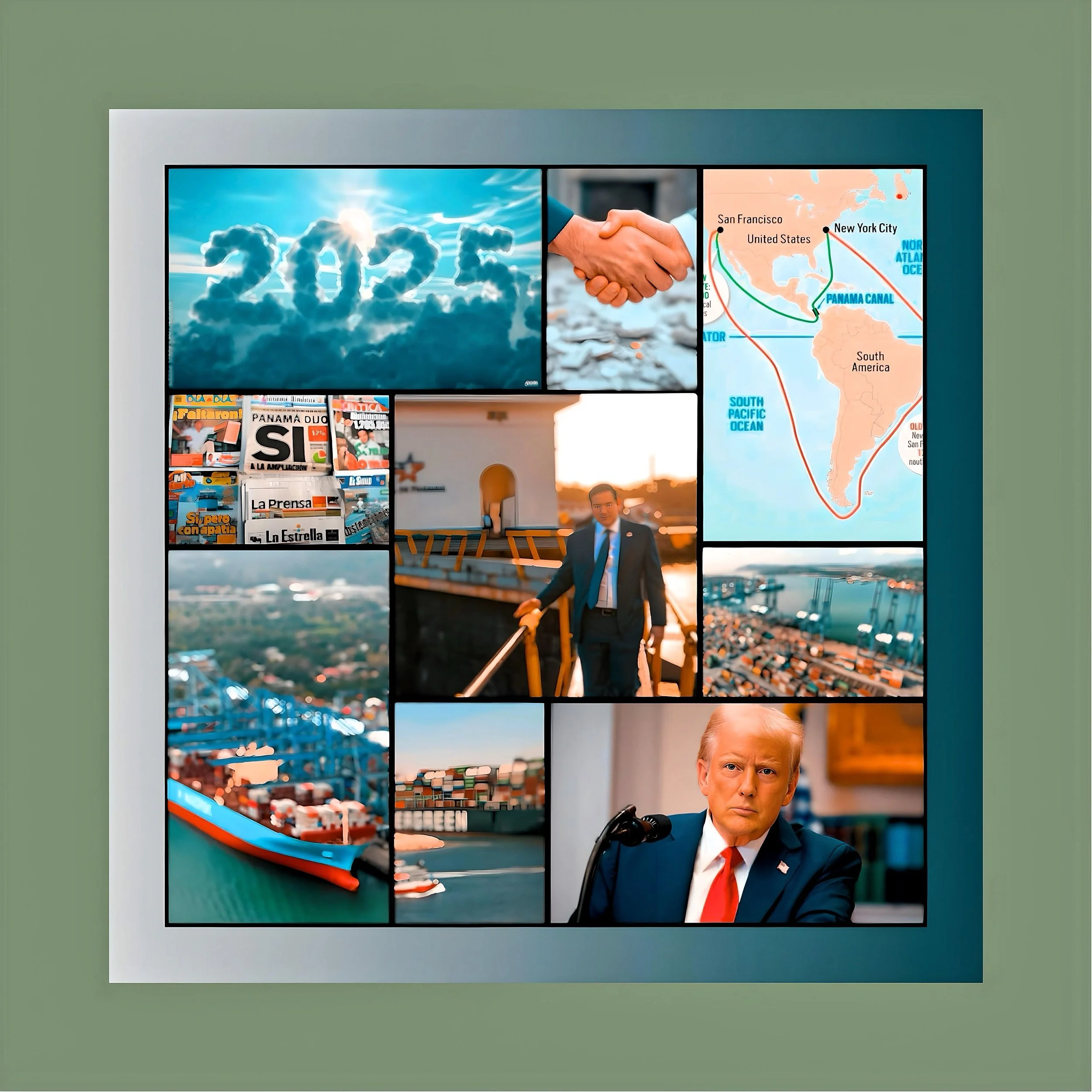Beijing.Forum- Long-Term Geopolitical Implications of Chinese Annexation of Taiwan
Introduction
China's potential annexation of Taiwan represents one of the most consequential geopolitical shifts of the 21st century, with ramifications extending far beyond the Indo-Pacific.
Drawing on analyses from defense institutes, economic forecasts, and geopolitical simulations, this report synthesizes the cascading effects of such an event on global power dynamics, financial stability, and international governance.
Economic Realignment and Technological Dominance
Semiconductor Supply Chain Catastrophe
Taiwan manufactures 92% of the world’s advanced semiconductors (≤7nm nodes), with TSMC alone producing 58% of the global supply.
Chinese control of this industry would grant Beijing unprecedented leverage over critical technologies, including AI, quantum computing, and defense systems.
The Baker Institute projects a $1.6 trillion loss in global GDP within six months of a blockade, surpassing the combined economic impacts of COVID-19 and the Ukraine war. Key sectors at risk include:
Automotive
Modern vehicles require 1,500–3,000 chips; prolonged shortages could idle 50% of global production.
Healthcare
72% of MRI components rely on Taiwanese semiconductors, threatening diagnostic capabilities worldwide.
AI Development
NVIDIA and Google depend on TSMC for advanced GPUs and TPUs, risking a freeze in the $15.7 trillion projected AI-derived GDP by 2030.
China’s dominance would enable the weaponization of chip exports, forcing nations to acquiesce to Beijing’s geopolitical demands or face technological stagnation.
This scenario has already spurred Western initiatives like the U.S. CHIPS Act, but Intel and Samsung cannot match TSMC’s 3nm yields before 2027, leaving a strategic vulnerability.
Global Trade Disruptions
The Taiwan Strait facilitates $5.3 trillion in annual trade, including 15% of global LNG shipments and 40% of Japan’s energy imports. A blockade or annexation would:
Divert 40% of container shipping through longer routes like the Sunda Strait, adding 18 days to transit times.
Trigger a 7.8% inflation spike in OECD nations due to disrupted supply chains.
Strain global banking systems with $2.1 trillion in marine insurance liabilities.
Military and Security Paradigm Shifts
Collapse of the First Island Chain
Taiwan’s geographic position anchors the U.S.-aligned First Island Chain, constraining China’s access to the Western Pacific. PLA control would:
Neutralize chokepoints like the Bashi and Miyako Straits, enabling unrestricted naval access.
Allow deployment of DF-26B missiles (4,000 km range) from Taiwan’s east coast, threatening U.S. bases in Guam.
Establish anti-access/area denial (A2/AD) zones over 90% of the Ryukyu Islands, encircling Japan.
Erosion of U.S. Alliance Credibility
Failure to defend Taiwan would undermine confidence in American security guarantees, potentially triggering:
Nuclear Proliferation
Japan and South Korea could pursue warheads within 6–18 months.
ASEAN Capitulation
70% of Southeast Asian nations might align with Beijing to avoid conflict.
NATO Fractures
Doubts over Article 5 commitments could weaken transatlantic solidarity.
Authoritarian Entrenchment and Ideological Shifts
Validation of Coercive Tactics
China’s success would legitimize its “Three Warfares” doctrine—legal, media, and psychological—as a template for territorial expansion. States like Russia (Moldova), Iran (Bahrain), and North Korea (South Korea) could replicate these strategies.
Democratic Recession
Taiwan’s fall would eliminate Asia’s “democratic beacon,” emboldening authoritarian regimes and accelerating mergers of surveillance technologies (e.g., integrating China’s social credit system with TSMC’s biometrics). Syed by semiconductor shortages, Western sanctions fatigue could fracture multilateral resolve within 12–18 months.
Global Governance and Institutional Realignment
UN and Multilateral Institutions
Beijing would leverage its enhanced position to reinterpret UNCLOS, justifying maritime claims in the South China Sea and undermining freedom of navigation. International organizations might adopt PRC-centric narratives to retain access to Chinese markets.
Regional Power Dynamics
Latin America: Diplomatic shifts from Taiwan to China (e.g., Paraguay, Guatemala) would expand Beijing’s economic penetration through non-transparent MOUs.
Arctic Militarization
PLA access to Taiwanese icebreaker technology could accelerate resource extraction in contested polar regions.
Pathways to Conflict and Strategic Responses
Annexation Scenarios
Blockade-Lite (72% Probability): Quarantining Taiwan under “maritime safety” pretexts, disrupting trade for 6–18 months to induce economic collapse.
Decapitation Strike (15% Probability): Cyberattacks on Taiwan’s C4ISR systems paired with special forces operations.
Full Invasion (13% Probability): Amphibious assault requiring 900,000+ troops, risking 64% PLA casualties.
U.S.-China Escalation Ladder
Phase 1
U.S.-Japan freedom of navigation operations (FONOPs) to break blockades.
Phase 2
THAAD deployments to Okinawa and activation of Philippine defense pacts.
Phase 3
Forward deployment of B-21 Raiders to Diego Garcia, risking nuclear brinkmanship.
Conclusion: The Unretreatable Defeat
As the Baker Institute warns, Taiwan’s fall would represent “a defeat from which the U.S. and its allies could not retreat.”
The repercussions extend beyond territorial control to fundamental shifts in economic power, military doctrine, and ideological legitimacy. Containment now requires:
Semiconductor Insourcing
G7 nations will achieve 40% advanced chip production by 2027.
Asymmetric Deterrence
Taiwan’s “porcupine strategy” with 1,000+ anti-ship missiles.
Cognitive Resilience
Countering Beijing’s narrative warfare through diaspora networks.
The window for preventive action is narrowing. By 2030, the cost of defending Taiwan may exceed the global system’s capacity to respond, forcing a Hobbesian choice between accepting Chinese primacy or risking civilization-altering conflict.
Critical note from Beijing.Forum
FAF ultimately asserts that the economic repercussions of a confined conflict will significantly destabilize both the Chinese and global economies.
It has long been underscored that the security and economic repercussions of any potential Chinese military action against Taiwan will extend far beyond the island itself.
In 2021, Japanese Prime Minister Shinzo Abe unequivocally stated that the Taiwan contingency is also a Japan contingency.
While the national security implications of a Chinese assault on Taiwan are not as pressing for the European Union as those facing Japan, the urgency of the EU's clarification of its policy on Taiwan cannot be overstated. The EU must deter Beijing from military adventurism and proactively prepare for the inevitable economic fallout of such a crisis.
An all-out Chinese military attack on Taiwan may not be the only or even the most likely scenario, but it is a risk that cannot be ignored. A survey conducted by the Center for Strategic and International Studies indicates that while a full-scale amphibious invasion is perceived as unlikely, most experts anticipate that China may escalate tensions through military blockades or quarantines within the next decade.
The potential costs of military or coercive actions by China would wreak havoc on the global economy. Even conservative estimates from the Rhodium Group project immediate losses exceeding $2 trillion from a Chinese blockade of Taiwan.
More extreme forecasts, such as those from Bloomberg economists, predict damage around $5 trillion in the first year alone—an economic hit equivalent to a staggering 5 percent drop in the global economy, comparable to the 5.9 percent decline during the 2009 financial crisis.
Taiwan would bear the brunt of this scenario, suffering a 12 percent economic loss, while China would see its economy suffer a nearly 9 percent dent.
Given these substantial risks, Beijing's ileadership will carefully consider any available military options.
However, European governments and corporate leaders cannot dismiss the possibility of a shifting political landscape in Beijing and Taipei that could disrupt the entrenched status quo.
The United States' response will significantly shape the global reaction to any crisis involving Taiwan.
The prospect of Donald Trump returning to the White House in 2024 injects a more transactional model into US-Taiwan relations—highlighted by Trump’s suggestion that Taiwan should bear the costs of its protection—and introduces unpredictability into the American stance during a crisis.






